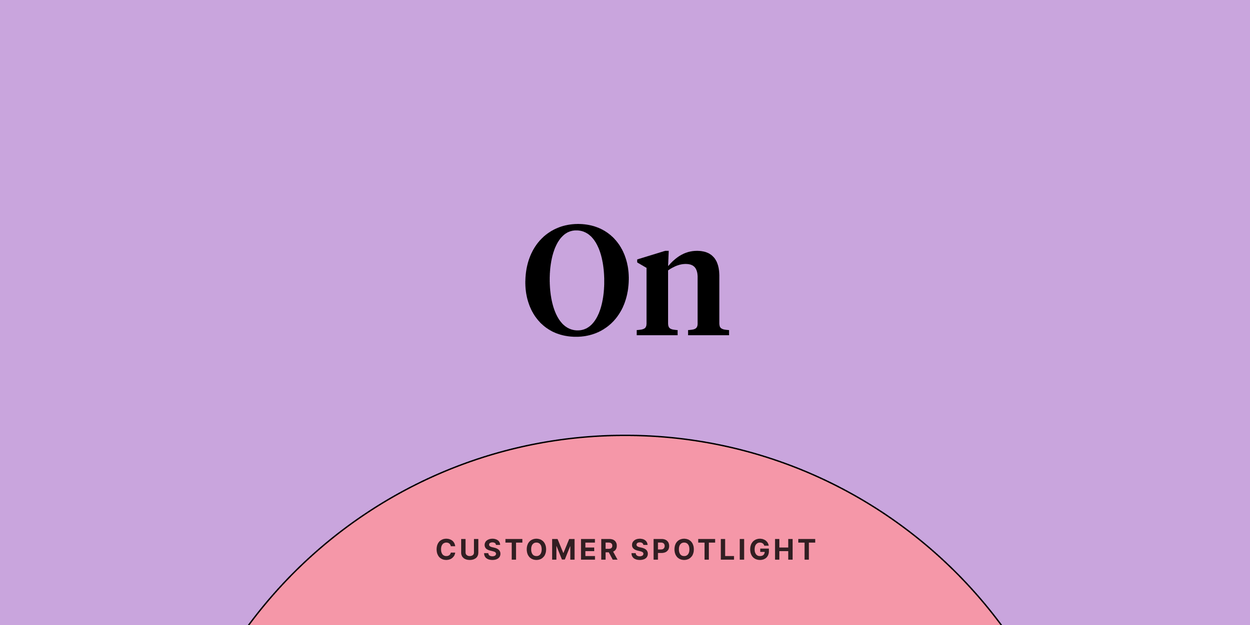
How On’s CEO-CPO relationship strengthens its culture

Written by

The employee experience platform
Although athletic sportswear brand On was only founded in 2010, it’s bringing in revenues of over $1 billion today. Through every step of its journey, On has striven for peak performance.
This was true when On had a three-person team with only one product, and it remains true today for On’s 2,000+ employees across 50 countries. The company upholds the principle of peak performance in both its operations and its sportswear, which is passionately embraced by the running community. Underpinning all of On’s successes is their understanding that a strong company culture allows On’s people to feel safe taking risks, innovating, and operating with autonomy.
To achieve this, Noa Perry Reifer, On’s Chief People Officer, and Marc Maurer, On’s Co-CEO, worked closely together to cultivate a healthy company culture that fosters peak performance. The two recently joined Culture Amp’s Culture First Forum event to share tips and learnings on the role of the CEO-CPO relationship in building this culture.
1. Candid feedback is key to continuous improvement
Noa and Marc believed that the only way to cultivate high-performing teams across the whole organization as it grew was to build a culture of radical candor, starting at the very top.
According to Noa, at the heart of the business is a desire for everyone at On to challenge themselves continuously to improve. But employees will only do this if they understand the impact of their individual actions as well as those of the business. That’s why On encourages its staff to always strategize by pondering the “why” – that is: Why is the organization taking this particular initiative?
“We use a lot of data to make our final decisions,” said Noa, “but we start by having conversations.”
Noa and Marc, who speak at least four times a week and offer honest feedback to each other, believe that trust is essential to these conversations. Having trust and giving each other direct feedback enables them to challenge themselves and each other to be their best authentic selves while keeping empathy and care at the forefront.
They believe that employees can’t grow or develop to their full potential without this environment of radical candor. Trust is the foundation of innovation and improvement, so having caring and empathetic conversations is so meaningful. When the CEO, CPO, and other leaders model radical candor, employees are more likely to embrace it as well.
2. The CEO and CPO work most closely with the board
Other than CEOs, perhaps only the CPO of organizations has as much exposure to the board. While much of the executive team work less closely with the board, the CPO has unparalleled knowledge of the ins and outs of the organization. Moreover, they are responsible for attracting and retaining the best talent and setting compensation levels. All in all, the CPO influences many of the areas that are critical to the company's growth – thus, they are vital for helping the organization make difficult decisions.
“Noa is probably the only person also working to such a large extent with the board,” said Marc. “Most of the rest of the team is a bit shielded from them, but Noa is not, so there are just so many elements where we have to function as a team. We spend a lot of time together talking through these topics.”
3. CEOs and CPOs must embrace the chaos
Every CEO knows that things don’t always go according to plan. That’s a reality CPOs are intimately acquainted with too. After all, people are people, and it’s natural for performance to wax and wane depending on a whole range of variables.
Now, both Noa and Marc advocate embracing the chaos. It’s only by understanding and accepting that the world is unpredictable that organizations can be flexible enough to adapt to it.
“If you try to fight against it, you're only going to lose,” said Marc. “So really, instead of trying to eliminate that, we’re actually trying to embrace and to work with that chaos.
“What we are talking [about] quite a lot with the team regarding chaos is the whole ability to think through something that we call polarities: when you have decisions to make, it’s typically either this or that, but we understand there is no right or wrong. So a polarity could be innovation versus process, and in these discussions, we decide whether we need to be an innovative company or a company with a lot of processes.
“Understanding it is never an ‘either/or’ is something that really helps people to embrace that chaotic environment.”
4. CEOs and CPOs need to immerse themselves in the organization to build accountability
“Regarding how I support the CEO, I think there’s a certain accountability for people who do my job to drive culture,” said Noa. The same is true for the CEO. Noa recalls overhearing Marc take a call with the head of marketing, and his first question was how developments were being communicated internally.
“This is an example of working through day-to-day challenges and decisions, not just HR challenges, but always putting culture first,” commented Noa. “I think that’s a perfect example of how it comes into play in business.”
To win trust throughout the organization – something essential to the CPO’s role – Noa can’t limit herself to just the HR or people world.
“Then, you will never be trusted,” she said. “It’s about thinking how you can really immerse yourself within everything that’s happening in the organization and not shying away from building trust.”
Sometimes, the counter-intuitive course is the best one
When On was pre-IPO in 2021 and the company had grown to nearly 1,000 people, naturally, senior leadership and management thought that more policies, rules, and processes would be necessary – this is what most companies do, after all.
But Noa and Marc agreed that, in some areas, they needed to take the opposite approach in order to preserve the kind of pro-innovation, heavily autonomous culture that had defined the company since it was founded.
“Instead of having more control, we decided to release control in many different areas,” said Noa. “I always tell my team the easiest thing to do is to add a rule and a process – that’s easy, you just write a document. But then you don’t keep your culture.”
“Releasing control works only when you have a very, very high talent density and high-performing teams,” added Marc. “It only works if people have trust in the organization.”
The best course of action for any given company will differ depending on their unique set of circumstances. Sometimes what will work best for you and your culture will go against the grain of what others are doing, but it’s the right choice nonetheless. Putting your people and culture first is what sets organizations up to weather the uncertainty of the future.




